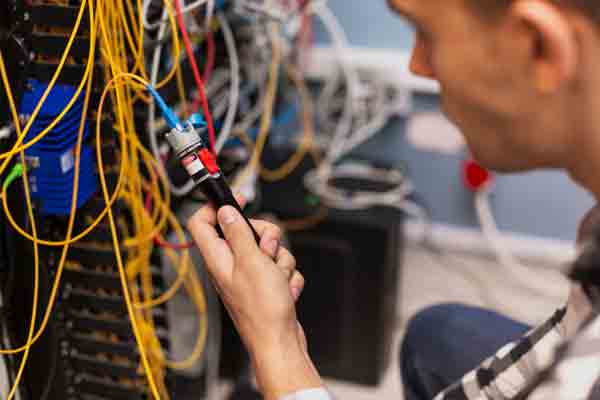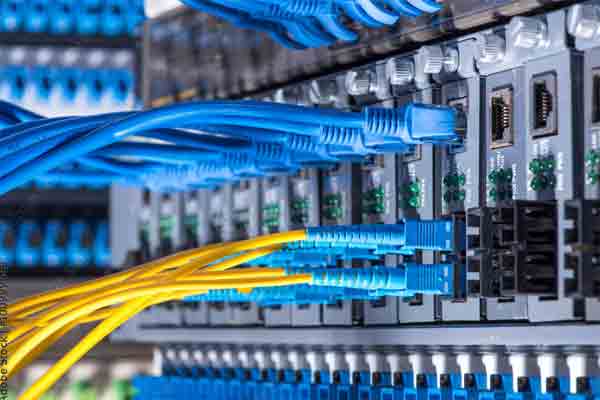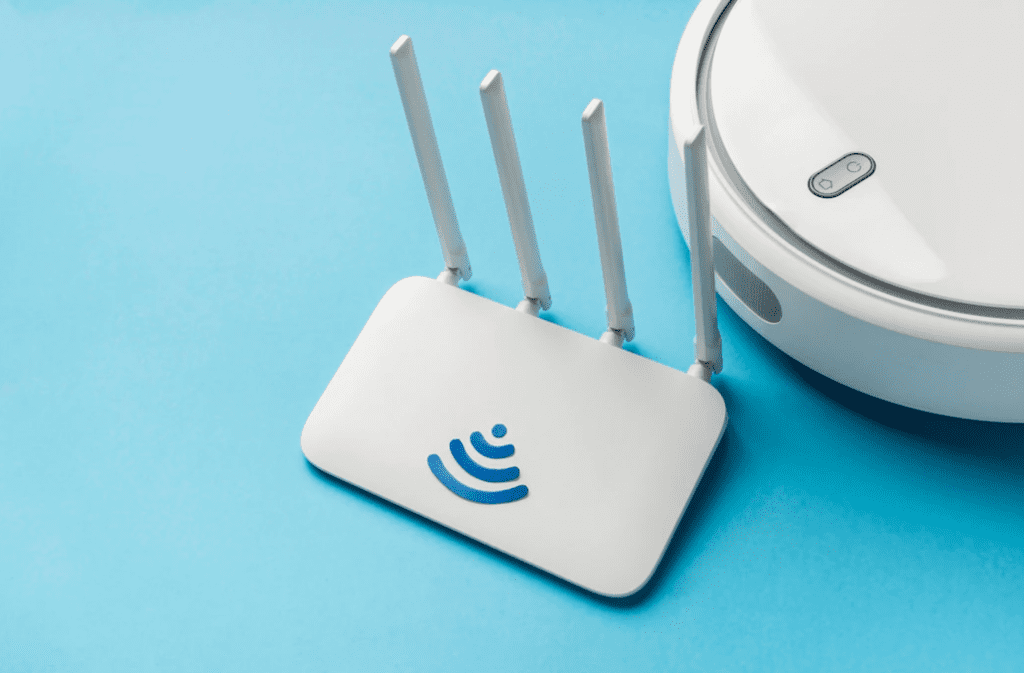Cloud computing is a trending internet-based technology driven by the concept of virtualization. Instead of maintaining physical data centers and servers. A Cloud computing infrastructure essentially creates a virtual enterprise IT environment consisting of software-defined components and computing power, storage, and network capabilities. This virtual infrastructure does what a physical infrastructure does and more. It helps reduce costs and complexity while optimizing data storage, management, and processing.

Without sufficient bandwidth, cloud computing would be ineffective, which is why businesses need a faster, more reliable internet connection to get the most out of their cloud resources. As a result, fiber optics technology has emerged as one of the most efficient networking and data transmission technologies. It involves data transmission in the form of light waves via glass fibers that pulsate at a speed only 31% slower than the speed of light in a vacuum.
Unlike other transmission methodologies, fiber optics are immune to data loss and other interferences. Extreme temperatures and weather conditions do not affect the network connections.
Here are the basics of cloud computing and how fiber optics provide cutting-edge connectivity for super-fast cloud-based operations of the future.
Fundamentals of Cloud Computing
The National Institute of Standards and Technologies (NIST) defines cloud computing by specifying five essential characteristics three service models and four deployment models.
Characteristics of Cloud Computing

- On-demand self-service: Users can provision for capabilities like network storage without interacting with providers.
- Broad network access: Services are available on the network and can be accessed through various devices, including mobile phones, laptops, and workstations.
- Resource pooling: Multi-tenant model enables the pooling of multiple easily accessible resources according to customer demand.
- Rapid elasticity: Capabilities can be quickly provisioned, released, and scaled in or out to fulfill demands.
- Measured service: Resource utilization is easily tracked, monitored, controlled, and reported for better transparency.
Service Models
- Infrastructure as a service (IaaS) provides cloud-accessible virtual computing resources such as servers, storage, processing, and network.
- Platform as a service (PaaS) is a ready-to-use deployment and deployment environment where developers can provision, run or manage applications.
- Software as a service (SaaS) allows customers to use a complete cloud-hosted application managed by the provider.
Deployment Models
- A private cloud or internal cloud dedicates the infrastructure to selected users or a single organization.
- A community cloud is a shared infrastructure where multiple organizations can share services and resources.
- The public cloud is a shared platform offered by third-party providers that is accessible through the internet.
- A hybrid cloud combines two or more cloud infrastructures for greater flexibility and leverages both private and public cloud capabilities.
Benefits of Fiber Optics in Cloud Computing
Fiber optic networks offer several benefits to businesses, helping them maximize their cloud computing potential:
Speed and Reliability

A high-speed internet connection ensures high performance for mission-critical cloud applications and better cloud data synchronization. With fiber-optic networks, it is possible to provide end-users with uninterrupted access to cloud applications and services. Even in the event of a power outage, information restoration is more straightforward.
Ability to scale
Fibers provide the right amount of scalability to keep up with expanding cloud environments and the emergence of increasingly complex applications. They can be installed, removed, or customized per business requirements and provide the required bandwidth to support several cloud applications.
Protects against cybersecurity threats
Unlike copper cables, fiber optics do not radiate signals. Compared to traditional lines, they are not easy to tap into and require extensive expertise to intrude. Moreover, super-fast data speeds make it even more challenging for hackers to intercept.
Creates a cloud data center that’s disaster-resistant
Extreme temperature and weather conditions can easily damage copper cable connections which can cause significant disruptions. Fiber cables are less corrosive and relatively more resistant to such disasters. They can withstand extreme pressure and temperature changes and keep users connected to the cloud regardless.
Improved quality control
Enterprises can get their fiber optic solutions customized and tested for increased network reliability, decreased maintenance costs, and optimal performance. They can easily identify fiber breaks, cuts, and other fiber issues through fiber monitoring applications. Users can also check efficiency through network simulations and time delay tests.
Prevents data loss
Fiber optics is a highly reliable solution for preventing data loss. In addition, these cables are resistant to natural calamities, immune to interceptions, and capable of transmitting bulk data without losing information.
Gives your business a competitive edge
With large amounts of bandwidth, higher flexibility, and security, businesses gain a competitive edge within the corporate landscape. Fiber optics solutions help organizations get the best out of their cloud resources and keep up with emerging technologies in cloud computing and other domains where a seamless connection is a prerequisite.
The Future of Cloud Computing and Fiber Optics
Cloud computing is an expansive domain that is bound to grow in the future Fiber-optics-powered cloud computing solutions are being used extensively. The future brings myriad opportunities for businesses that are unifying these two technologies. New fiber optics initiatives like underwater connectivity and expansion of 5G networks are already underway. However, many countries still lack access to high-speed internet and cloud computing solutions. Fiber-optic initiatives can help open up more markets and create a globally connected cable system linking different data centers worldwide.

The increased cloud storage capacity that comes with advancement in cloud computing also calls for faster transmission methods. With the rise of IoT devices, data centers need better connectivity between physical locations. Fiber-optics offers what enterprise networks and modern IT infrastructures need to become future-ready.
Fiber-Optics for IT Infrastructures of the Future
Fiber optics technology and cloud computing are closely related. Fiber optic technology connects cloud servers and data centers, enabling high-speed data transmission and distribution. As cloud computing is reigning in the business technology spectrum and exciting transformation across all areas of business operations, the need for improved connectivity is higher than ever.
Fiber optics technology has proved to be a robust support system for seamless global networking and connectivity. Unifying fiber optics and cloud computing can help businesses transform radically to align with future technologies and developments. It ensures a promising future for cloud computing in the coming times.

